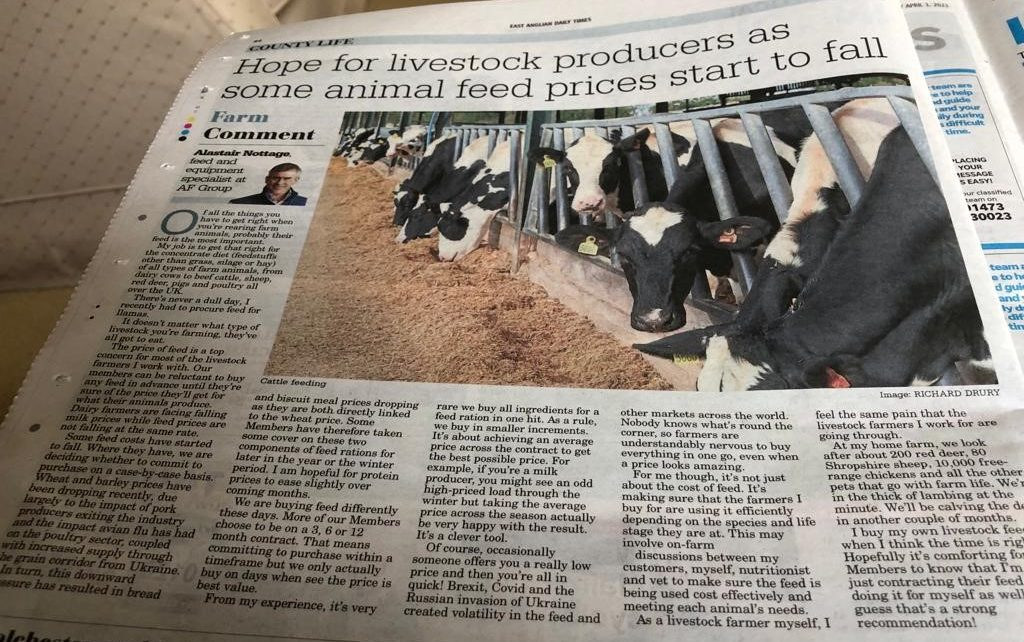News
Meeting the need for farm animal feed
06 April 2023
Of all the things you have to get right when you’re rearing farm animals, probably their feed is the most important. My job is to get that right for the concentrate diet (feedstuffs other than grass, silage or hay) of all types of farm animals, from dairy cows to beef cattle, sheep, red deer, pigs and poultry all over the UK. There’s never a dull day, I recently had to procure feed for llamas.
It doesn’t matter what type of livestock you’re farming, they’ve all got to eat.The price of feed is a top concern for most of the livestock farmers I work with. Our Members can be reluctant to buy any feed in advance until they’re sure of the price they’ll get for what their animals produce. Dairy farmers are facing falling milk prices while feed prices are not falling at the same rate.
Some feed costs have started to fall. Where they have, we are deciding whether to commit to purchase on a case-by-case basis. Wheat and barley prices have been dropping recently, due largely to the impact of pork producers exiting the industry and the impact avian flu has had on the poultry sector, coupled with increased supply through the grain corridor from Ukraine. In turn, this downward pressure has resulted in bread and biscuit meal prices dropping as they are both directly linked to the wheat price. Some Members have therefore taken some cover on these two components of feed rations for later in the year or the winter period. I am hopeful for protein prices to ease slightly over coming months.
We are buying feed differently these days. More of our Members choose to be on a 3, 6 or 12 month contract. That means committing to purchase within a timeframe but we only actually buy on days when see the price is best value.
From my experience, it’s very rare we buy all ingredients for a feed ration in one hit. As a rule, we buy in smaller increments. It’s about achieving an average price across the contract to get the best possible price. For example, if you’re a milk producer, you might see an odd high-priced load through the winter but taking the average price across the season actually be very happy with the result. It’s a clever tool.
Of course, occasionally someone offers you a really low price and then you’re all in quick! Brexit, Covid and the Russian invasion of Ukraine created volatility in the feed and other markets across the world. Nobody knows what’s round the corner, so farmers are understandably nervous to buy everything in one go, even when a price looks amazing.
For me though, it’s not just about the cost of feed. It’s making sure that the farmers I buy for are using it efficiently depending on the species and life stage they are at. This may involve on-farm
discussions between my customers, myself, nutritionist and vet to make sure the feed is being used cost effectively and meeting each animal’s needs.
As a livestock farmer myself, I feel the same pain that the livestock farmers I work for are going through.At my home farm, we look after about 200 red deer, 80 Shropshire sheep, 10,000 free-range chickens and all the other pets that go with farm life. We’re in the thick of lambing at the minute. We’ll be calving the deer in another couple of months.I buy my own livestock feed when I think the time is right. Hopefully it’s comforting for AF Members to know that I’m not just contracting their feed, I’m doing it for myself as well. I guess that’s a strong recommendation!
Alastair Nottage Feed & Equipment Specialist
alastair.nottage@af.farm 01603 881 811
Nottage, A. 2023. Hope for livestock producers as some animal feed prices start to fall. East Anglian Daily Times. 1st April.